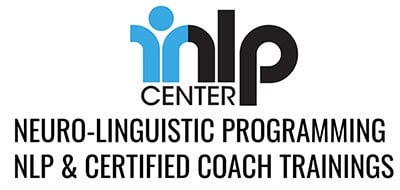Introduction
In this article, we will discuss a hypothetical case in which the iNLP Center Tame the DMN exercise and NLP New Behavior Generator strategies are used with a client to help her learn now to stop procrastinating.
The Hypothetical Client
Beth is a 55-year-old woman with an established marketing career. Her children are grown and her partner is the CFO of a successful company. Financially, they are comfortable.
Beth recently retired after 30 years in the marketing field. Since then, she has spent more and more time playing tennis and touring wineries with friends. While the drinking is not a problem, she wants to be involved in activities more meaningful to her.
Beth came to see me, an NLP Master Practitioner because she wants to develop an online consulting business. In fact, this business has been her dream for years. She has attempted to develop the website numerous times without success.
However, her many excuses for not starting the project and her doubts that she can be successful stop her every time.
Approach
As with every client in the initial session, I did the following:
• Built rapport.
• Identified the positive intent of the behavior.
• Conducted the Outcome Specification and the Logical Level exercises as an assessment.
• Asked Meta Model Questions to clarify vagueness.
• Planned a strategy to move forward.
Beth’s Responses to the NLP Outcome Specification Exercise
Her goal is to create a successful online consulting business.
She will achieve her goal when she has five paying clients.
The goal is relevant in several ways: she will be happier, she will be involved in a productive endeavor, and she will feel good about herself.
Her fears and doubts about being successful stop her from pursuing her goal. She is plagued with thoughts like “I don’t know how to develop a website,” “I might fail,” and “the website might not be good enough to draw clients.”
Current resources include her years of experience, money, and time to invest in the project and a supportive husband.
Necessary additional resources include a website developer, a marketing plan, and improved communication skills.
The important people in her life would be thrilled even if it took her time and energy because she would be happy.
Daily actions she must take are to work on a plan, learn better communication skills, and manage her negative self-talk.
She thinks the goal is worth it, despite knowing the website will take enormous time and effort.
She says the positive intent of her reluctance to develop the website is her desire to avoid anxiety.
Beth’s Responses to NLP Logical Levels Exercise
1. Environment Level – refers to what is around her when the behavior occurs.
Beth: When I sit at the computer ready to create my website.
2. Behavior Level – refers to what she does.
Beth: I sit at the computer and think of things I “should” do such as exercise or call a friend. I also think of all the reasons why this project will never work.
3. Capability Level refers to what she is able to do.
Beth: I have the time. I want a website and online business. I have years of experience and plenty of good ideas. I can work from home.
4. Belief Level – refers to what she thinks she can or should do.
Beth: I want a website, but something always gets in the way.
5. Identity Level – refers to who she thinks she is.
Beth: I am a successful businesswoman who is afraid to start something new.
I chose to work with Beth at the Belief Level because once her beliefs change, the Capabilities Level, the Behavior Level, and the Environment Level will likely change as well. Two strategies, I can use with her are the Default Mode Network (DMN) and the New Behavior Generator. However, there are many other possibilities.
DEFAULT MODE NETWORK
The default mode network (DMN) is an internal network in the brain that continually generates a wealth of mental activity and body tension. When the “task-oriented” brain is not focused on solving a problem, the DMN works overtime. While it does not filter information or attempt to protect a person in any way, it does generate endless mental and emotional data, as well as negative and scary thoughts.
To disengage the DMN, we use two NLP forms: the Stressor Map and The New Awareness Map. I asked Beth to write the word “Website” at the top of the Stressor Map and, then, to record every thought and idea that came to mind as she thought about developing the website. She wrote the following:
Website
• I’m not good enough to create a website.
• The website will take energy.
• I don’t know how.
• The website won’t be special enough.
• The project will cost money.
• I have money.
• I have done similar work for years.
• I do have experience.
• My husband supports me.
• I don’t want to use my time wine tasting and playing tennis.
• I want to see if I can do it.
• I might fail.
• The website has been a long-time dream.
• I have no plan.
• It will take a lot of time and energy.
• I am tired and too old to start something new.
• I don’t want to be that busy.
• I might succeed.
• I won’t be happy if I don’t try.
• I might do it wrong.
After she completed her thoughts, I asked Beth to look out the window and focus on the movement of the trees outside. This external stimulus created a break state and cleansed her mind. Then, I asked her to write the word “Website” at the top of the New Awareness Map and to record the thoughts and ideas that now came to mind. Beth was surprised to find she had very different, more positive thoughts. Her responses were as follows:
Website
• I could dedicate a certain amount of time and money to develop the project.
• I could research what has worked for others and what has not.
• It would be fun to try.
• I could hire a coach and a website designer to help me get started.
• I could do my best for a year and see what happens.
• If I don’t give it a solid try, I will be disappointed in myself.
• My husband and my former colleagues have plenty of experience from which to draw.
• I am not necessarily ready to go, but there are several pieces already in place.
Based on her new thinking, Beth decided to break the project into chunks and enlist help in the areas where she felt weak. I also guided her through the New Behavior Generator.
Beth’s Responses to the New Behavior Generator
1. Identity the “stuck state.”
Beth: My stuck state is avoiding my long-held dream of not having an online business.
2. Guide her to consider the stuck state from a dissociated viewpoint. This is achieved by Beth seeing the “stuck Beth” as a neutral observer watching a movie.
3. From this dissociated state I asked her to identify several choices she could take.
Beth determined she could:
a. Set aside an hour or two daily to work on the project.
b. Hire a coach to help her develop a plan and learn communication skills.
c. Hire a website developer to design the website.
d. Give up the whole idea.
e. Learn to develop the website herself.
f. Take the first step and see what happens.
4. With each alternative, I asked the ecology question: “What would happen if you incorporated this option into the stuck state situation?”
BETH:
a. She did not want to give up the idea nor did she want to learn to develop the website.
b. She could see herself setting aside an hour or two daily to work on the project.
c. She wanted to continue to work with me as a coach and to hire a website developer.
5. Have her step into each image and picture using the possible options.
BETH: After stepping into each image, she realized that she needed to make a plan to move forward. This would be her First Step.
6. Finally, I guided Beth to Future Pace. I instructed her to:
a. Picture possible future situations in which she might talk herself out of working on the site. For instance, her friend asks her to play tennis, she gets discouraged with the process, the birdcage needs cleaning, or she wants to give up.
b. Imagine stepping into each situation – by seeing, hearing, feeling, smelling and/or tasting what she would experience if the new skills were in place.
c. Notice whether or not the change holds, and whether or not she responded the way she wanted to respond.
Beth felt that besides plan development, she could learn motivation strategies and communication skills during our coaching sessions. She also thought the website developer’s ideas would build enthusiasm for the project.
As a starting point, I taught Beth about anchors. I suggested she think of a time when she completed a project and felt pride and confidence. I instructed her to anchor the feeling by pressing the fingers of her left hand to her lips. We repeated the anchor several times until the feeling of accomplishment was strong. Finally, I had her Future Pace and think of times where she might get distracted and then use the anchor. These are strategies I might use, what would you do?
Neuro-lingustic programming includes an amazing set of tools, that when combined can create limitless strategies to help your clients achieve their goals. If you’d like to learn NLP techniques and work with clients the way I have in this case study, check out our NLP Trainings.



